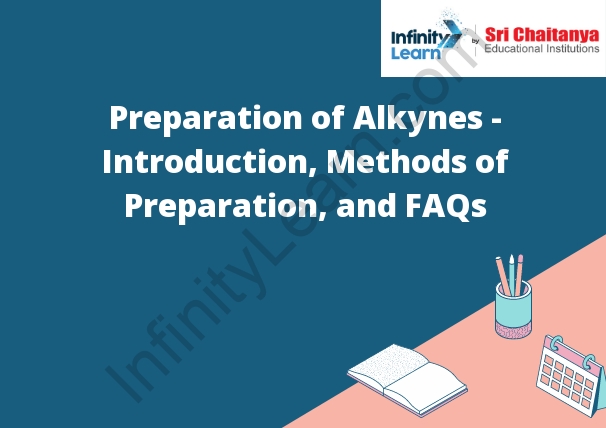Table of Contents
Introduction to Alkynes
Alkynes are organic molecules that contain a carbon-carbon triple bond. They are named for the alkane functional group they resemble (e.g., ethyne is the simplest alkyne). Alkynes are generally unstable and reactive, and are not found in nature. Preparation of Alkynes – Introduction Methods of Preparation and FAQs.

Methods of Preparation of Alkynes
There are two main methods for preparing alkynes: the Wittig reaction and the hydroboration-oxidation reaction.
The Wittig reaction involves the reaction of a phosphonium ylide with an aldehyde or ketone to form an alkene. The hydroboration-oxidation reaction involves the reaction of an alkyne with hydrogen and borane to form an alkene, followed by the oxidation of the alkene to an alkyne.
Alkynes, also known as acetylenes, are a type of hydrocarbon that contain a carbon-carbon triple bond. They are relatively rare and are most commonly found in natural gas and petroleum. Alkynes can be prepared in the laboratory by a variety of methods, the most common of which is the reduction of an alkyne with a strong reducing agent such as lithium aluminum hydride (LiAlH4).
The most common method for the preparation of alkynes is the reduction of an alkyne with a strong reducing agent such as lithium aluminum hydride (LiAlH4). In this procedure, the alkyne is dissolved in anhydrous tetrahydrofuran (THF) and the LiAlH4 is added. The reaction produces lithium hydride (LiH) and the alkane product.
The following equation illustrates the reaction:
C≡C + 2LiAlH4 → LiH + C2H4
Another common method for the preparation of alkynes is the reaction of an alkyne with a halogenated alkane in the presence of a base. In this procedure, the alkyne is treated with a halogenated alkane in the presence of a base such as sodium hydroxide (NaOH). The reaction produces the alkane product and a salt.
The following equation illustrates the reaction:
C≡C + CH3CH2Br → C2H4 + CH3CH2BrO
Alkynes can also be prepared by the reaction of an alkyne with an aldehyde or ketone in the presence of a base. In this procedure, the alkyne is treated with an aldehyde or ketone in the presence of a base such as sodium hydroxide (NaOH). The reaction produces the alkane product and an alcohol.
The following equation illustrates the reaction:
C≡C + CH3CHO → C2H4 + CH3CH2OH




